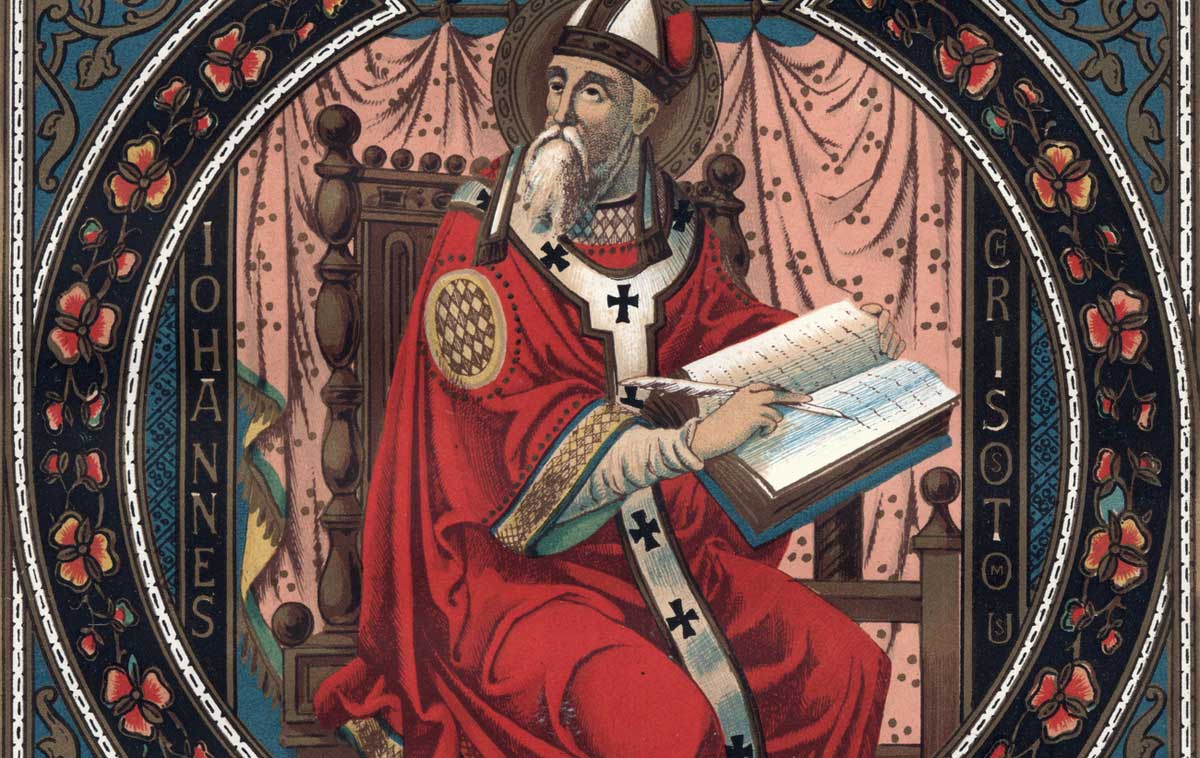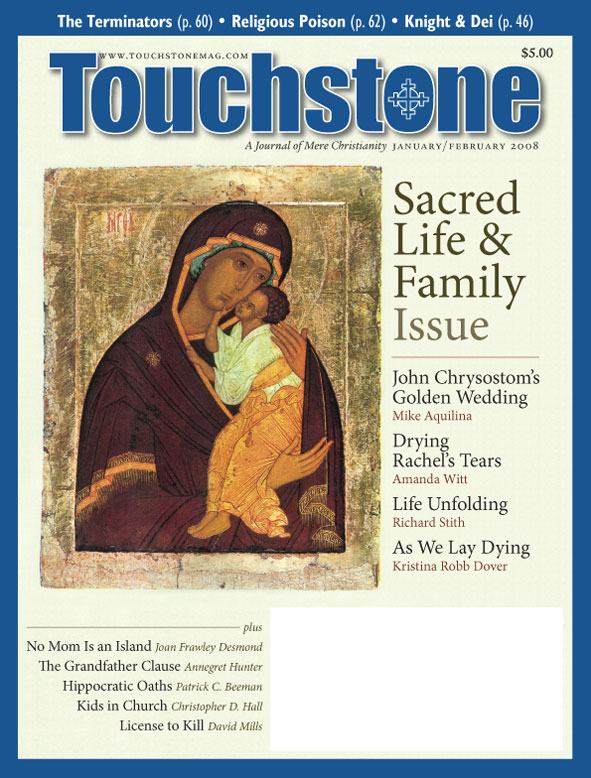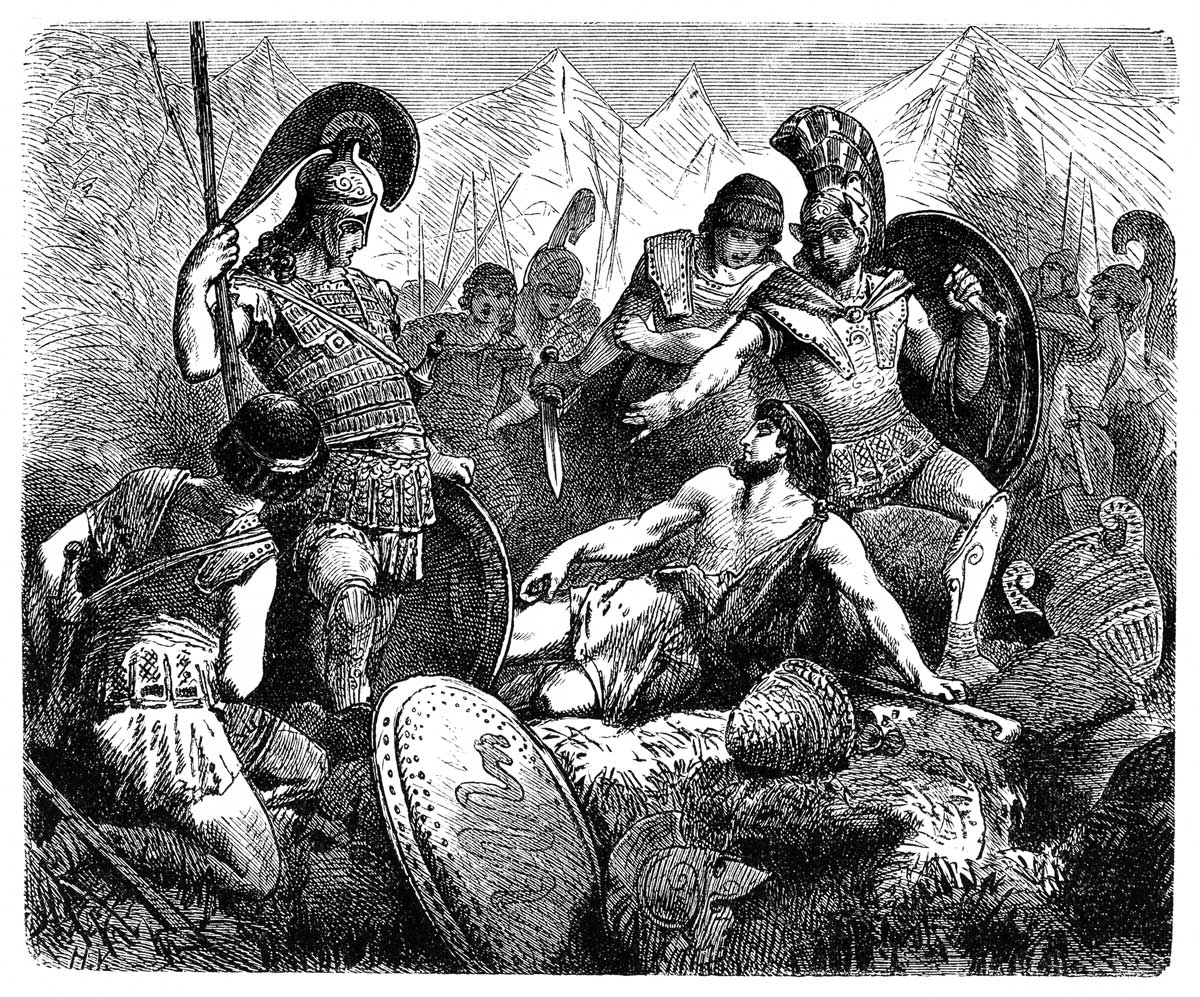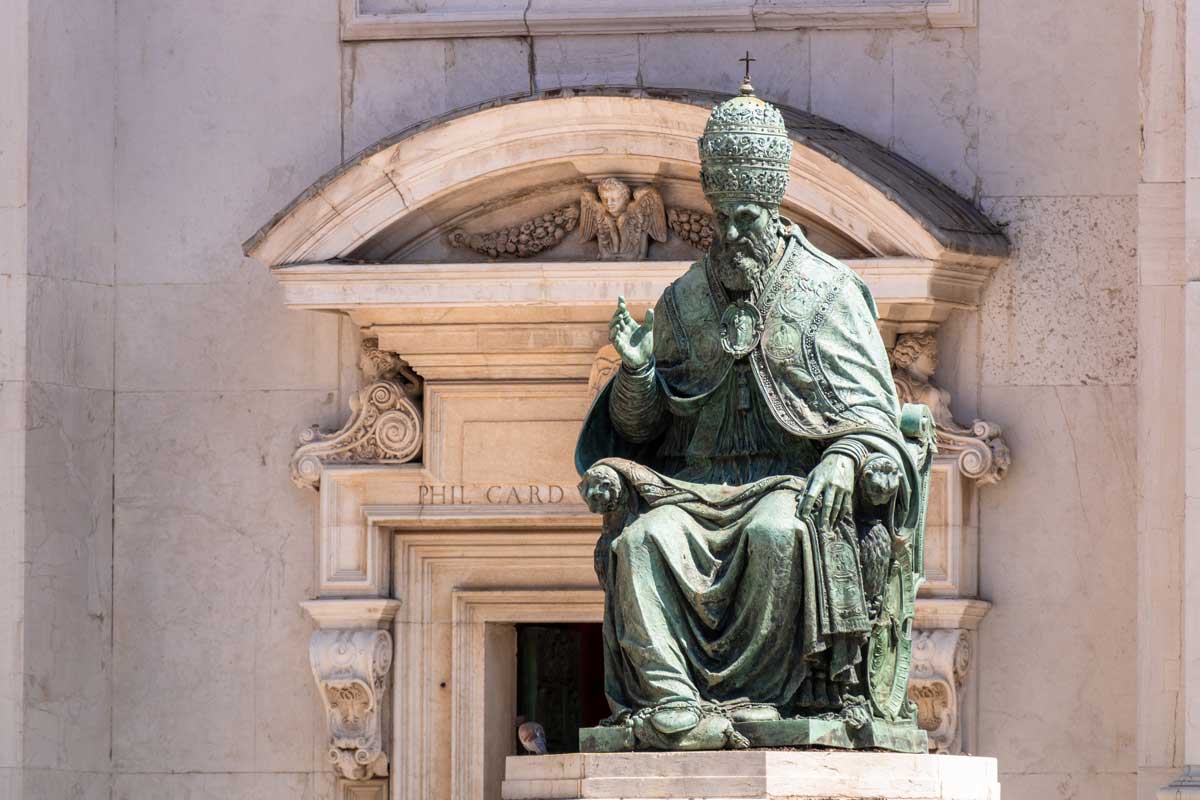Feature
One Flesh of Purest Gold
John Chrysostom’s Discovery of the Blessings & Mysteries of Marriage
When a man publishes so much—we have some 700 sermons and 246 letters of St. John Chrysostom’s, plus biblical commentaries, moral discourses, and theological treatises—an industrious enemy can pull together enough strands to make a strong rope for his hanging. On the subject of marriage, John made it easy for his enemies.
When libertines want to caricature Christian teaching, they inevitably quote Chrysostom. One anti-Christian website produces this gem from one of his homilies: “It does not profit a man to marry. For what is a woman but an enemy of friendship, an inescapable punishment, a necessary evil, a natural temptation, a domestic danger, delectable mischief, a fault in nature, painted with beautiful colors?” Even so great a historian as Peter Brown found Chrysostom’s vision of sexuality to be “anxious” and “bleak.”
Yet John is the Father most invoked by those who wish to exalt the Christian vision of marriage. The Orthodox theologian Vigen Guroian speaks of “Chrysostom’s virtually unique contribution” to a positive Christian understanding of family life.
He quotes John’s famous description of lovemaking: “How do they become one flesh? As if she were gold receiving purest gold, the woman receives the man’s seed with rich pleasure, and within her it is nourished, cherished, and refined. It is mingled with her own substance and she then returns it as a child!”
A necessary evil, gold receiving gold. . . . How do we reconcile these two sides of Chrysostom? Do we dismiss him as a hypocrite or a clericalist who held married people to a lower standard than monks?
No. Both quotations—the harangue and the poetry—make sense in the context of John’s life.
A Monastic Home
St. John was born in Antioch around A.D. 349. His father, a high-ranking civil servant named Secundus, died shortly after his birth, leaving his wife Anthousa a widow at age twenty. She could have remarried but chose to follow the biblical counsel “to the unmarried and the widows . . . to remain single” (1 Cor. 7:8), enrolling in the Church’s order of widows and committing herself to a life of prayer, continence, and service.
Anthousa’s piety made a deep impression on young John. He also lived with an aunt, Sabiniana, who served the Church of Antioch as a deaconess. Her contemporaries tell us that she “conversed intimately with God.” Needless to say, John grew up in an unusual, almost monastic, household.
He seemed destined to be a civil servant like his father, but after graduation he and a friend decided to form a “brotherhood,” a household sharing a common life of voluntary poverty, prayer, and contemplation. They had gone far with their plans when John broke the news to his mother.
Mike Aquilina is vice president of the St. Paul Center for Biblical Theology (www.salvationhistory.com) and a general editor of The Catholic Vision of Love catechetical series.
subscription options
Order
Print/Online Subscription

Get six issues (one year) of Touchstone PLUS full online access including pdf downloads for only $39.95. That's only $3.34 per month!
Order
Online Only
Subscription

Get a one-year full-access subscription to the Touchstone online archives for only $19.95. That's only $1.66 per month!
bulk subscriptions
Order Touchstone subscriptions in bulk and save $10 per sub! Each subscription includes 6 issues of Touchstone plus full online access to touchstonemag.com—including archives, videos, and pdf downloads of recent issues for only $29.95 each! Great for churches or study groups.
Transactions will be processed on a secure server.
more on marriage from the online archives
more from the online archives
calling all readers
Please Donate
"There are magazines worth reading but few worth saving . . . Touchstone is just such a magazine."
—Alice von Hildebrand
"Here we do not concede one square millimeter of territory to falsehood, folly, contemporary sentimentality, or fashion. We speak the truth, and let God be our judge. . . . Touchstone is the one committedly Christian conservative journal."
—Anthony Esolen, Touchstone senior editor













